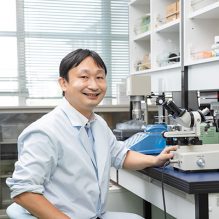-
About
- Kyoto Prize
-
Research Grants
-
Social Contributions
- Events
- News
This website uses cookies to improve the user experience. If you continue on this website, you will provide your consent to our use of cookies.
About
Research Grants
Social Contributions

Associate Professor, Graduate School of Engineering, Nagoya Institute of Technology *Profile is at the time of the award.
2023Inamori Research GrantsBiology & Life sciences
I hope to create innovative heart failure therapies (bio-inspired medicine) based on a better understanding of how the heart works in various animals so that those mechanisms can be applied to our own.
Avian cardiomyocytes share structural similarities with those of amphibians and reptiles, as well as with mammalian cells observed under severe heart failure—types typically not associated with high cardiac output. Nevertheless, birds achieve cardiac performance comparable to that of mammals. In this study, we revealed that birds accomplish efficient and robust heartbeat generation by finely regulating intracellular calcium concentrations across both time and space. This finding highlights an evolutionarily refined and functionally sophisticated mechanism that goes beyond mere structural differences.
Yoshihiro Ujihara (2024) Exploring the Differences in Avian and Mammalian Hearts through the Unique Membrane Structures of Cardiomyocytes: Calcium Concentration Management and Cardiac Resilience MEMBRANE 49 (2), 82-86 doi: 10.5360/membrane.49.82
Biology & Life sciences
